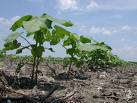The Plant Patent
What is it? What do you need to know about it?

Plant patents - I have mentioned in other places on this site what kind of work experience I have had (and not had). We are going to now discuss one I have not had. I don't do plant patents.
Still - inquiring minds want to know - what is the nature of this type of patent?
This type of patent is granted by the Government to an inventor (or assignee) who has invented or discovered and asexually reproduced a distinct and new variety of plant, other than a tuber propagated plant or a plant found in an uncultivated state.

Now - already - I have introduced terms that many of us are unfamiliar with. As you read on I will try to make it a little clearer.Let's first try to get a clearer about what a plant is. Some of the US Patent Office guidelines are that:
The term plant is limited to a living plant organism which expresses a set of characteristics determined by its single, genetic makeup or genotype, which can be duplicated through asexual reproduction, but which can not otherwise be "made" or "manufactured.
Hybrids, mutants, and transformed plants are considered as plants under this definition. Mutants may be spontaneous or induced. Hybrids may be natural, from a planned breeding program, or somatic in source. While natural plant mutants might have naturally occurred, they must have been discovered in a cultivated area.
Algae and macro fungi are regarded as plants, but bacteria are not.
Don't go scrambling for your dictionary - I will try to explain what Asexual Reproduction is.

Asexual reproduction is the propagation of a plant to multiply the plant without the use of genetic seeds to assure an exact genetic copy of the plant being reproduced. Any known method of asexual reproduction which renders a true genetic copy of the plant may be employed. Acceptable modes of asexual reproduction would include but may not be limited to:
Rooting Cuttings; Grafting and Budding; Apomictic Seeds; Bulbs; Division; Slips; Layering; Rhizomes; Runners; Corms; Tissue Culture; Nucellar Embryos
Sorry - I am not going to define all of those.
The purpose of requiring asexual reproduction is to establish the stability of the plant. Asexual reproduction must be performed with sufficient time prior to application for patent rights to allow the thorough evaluation clones of the claimed plant for stability thus assuring that the new specimens retain the identical distinguishing characteristics of the original plant. So invention for purposes of a plant patent is a two step process:
1. The identification of a novel plant. This step could be performed in any cultivated area. It could involve the identification or recognition of an offtype plant in a monoculture of a known variety or the identification of a desirable mutant which was either spontaneous or induced. Or, it could result from the identification or recognition of an outstanding individual within the progeny of a cross made in a planned breeding program.

2. The second step, which consists of asexual reproduction, tests the stability of the claimed plant to assure that the plant's unique characteristics are not due to disease, infection, or exposure to agents which cause a change in the plant's appearance which is transitory and not due to a change in the genotype of the plant.
Both of these steps must be satisfied before a plant patent application is filed. The inventor of a plant must identify the novel plant, and then asexually reproduce it and observe the clones for a sufficient amount of time to have concluded that the clones are identical to the parent plant in all characteristics.
Filing of an application before the second step of invention has been completed will result in rejection of the claim as being premature and nonstatutory.
That is all (and probably more) that you need to know for now. But seriously - if you are in the plant business and need to pursue a plant patent you should consider a patent agent or attorney that specializes in this special field of patents.
Links
Plant Patents
Return to the Top of This Page
The Business of Patents Home Page
Return to Home Page
Steps for Getting a Patent
Return to the Steps for Getting a Patent Page
Mike Ervin
Mike Ervin - Cost Effective Small Business Patent Protection.
Contact Me
If you have any questions on on this site - please feel free to contact me.